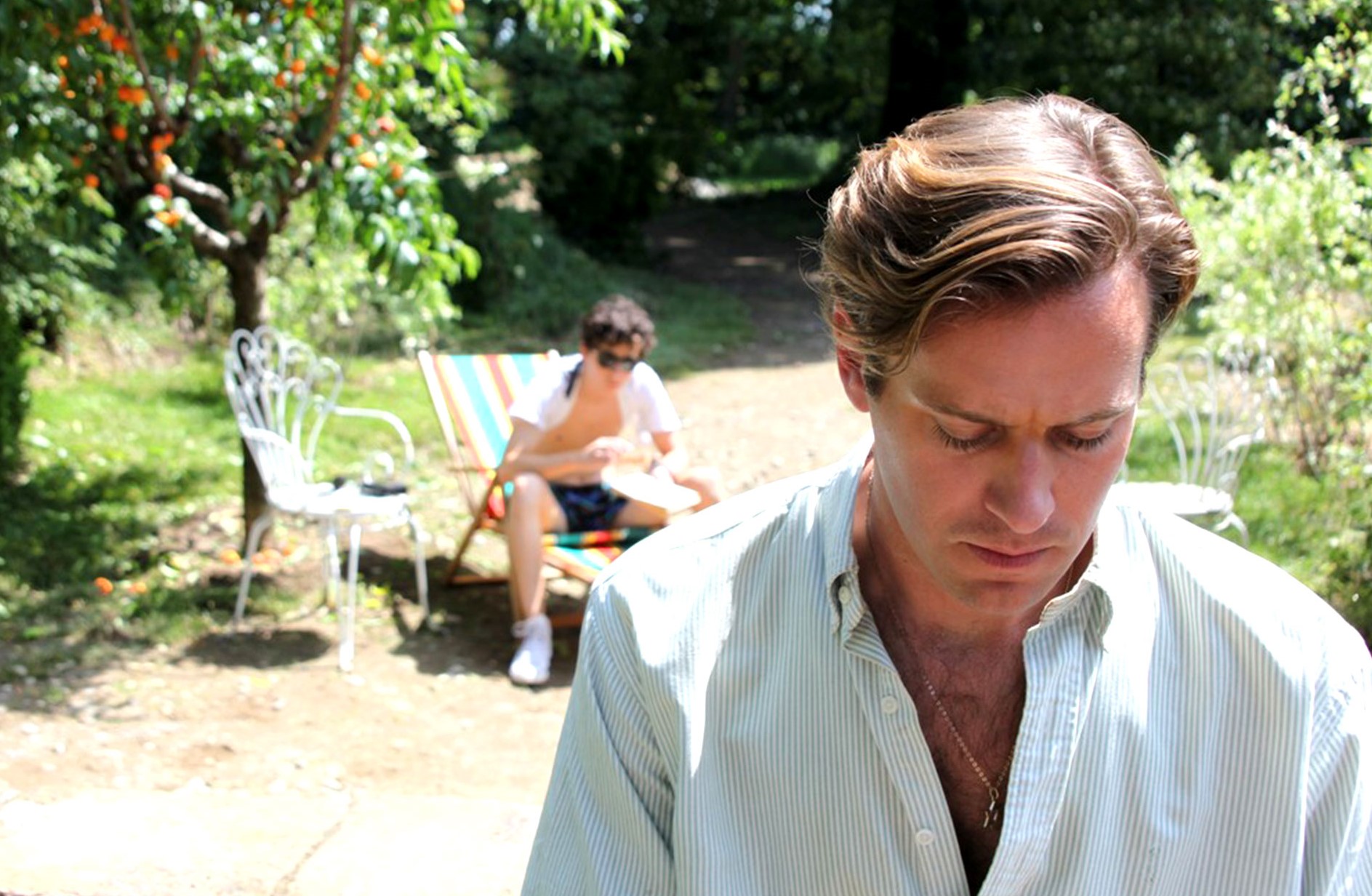Call Me By Your Name will forever be on the lips of all queer writers, a title we perpetually utter when ratifying the queer cinematic cannon. It will also always linger as a taste of pleasure remembered. I am also fortunate that my lips can proudly utter the title in a way the two protagonists could never. They lack a queer cannon, afraid to participate in that nearly-hidden culture themselves, and in the absence of such referents, the two men simply yearn until they can grab and lick and touch one another. This transaction of lips—diegetic mouths that carve out queerness on male flesh and the speech of incredulous audience goers who spread word-of-mouth awareness—reveal a sensuality that moves from the aesthetic to the embodied, from the public viewing arena into the private recesses of each of our minds.
Luca Guadagnino's Call Me By Your Name was always a film I would love. It had entered the queer imagination before it was even released into any normal theater. Gay media branded it the film of the year from its first glowing reviews, so its place in history was known since Sundance. What was always less certain to me was my place in the film. Would I identify with any of the characters? (I did.) Would I feel attracted to the men on the screen? (Yes.) And does this story show something universal about queerness?
But shortly after it began, I knew the answer: a resounding yes. From the opening titles, it transported me both into "Somewhere in northern Italy" and my own summers past. I simultaneously felt embedded in their world and thrown back into mine.
The physicality of the cinematography encouraged this. It forced a profound sensual awareness, bringing audiences in to watch closely as characters touched their lips and one another, as if participating through their recorded stand-ins. Shots focused and refocused on the skin of one man, then the eyes of another, manifesting the intimate spatial relationships and tension between their skins. The light felt palpable, simmering on their surfaces as heat radiating above them in the murky, humid air.
As their passions awakened, so did my memories of similar hot summers. Obviously, not every detail resonated directly. My teenage years were not spent in Italy, but through this simulated intimacy, lost memories of poolside shenanigans suddenly were assimilated into my own path towards identifying as a gay man. The glimmer of their pond and the beading of sweat on their bodies on the screen had matching fragments in my own past.
My personal queer history had always seemed to start in college, when I began to identify as gay, however, before I gave myself permission to speak it, or even began to think it myself, there were signs of male desire. Like Elio sniffing Oliver's trunks, I too admired the clothes and deodorant of other men, the type of person I imagined myself one day becoming. Back then, that thought was free of eroticism, but that desire for other's appearances and that intensive interest in their bodies has taken on a new meaning in adulthood. These tokens of maleness, and my appreciation of them, had always lingered in the ether before my self-sexualization as a queer man, yet this film reminds me that this early confusion is an assimilable part of the past that deserves its place in my story of identity.
A work of fiction—born from someone else's queer mind—this story is nevertheless intensely personal to me. Fragmented storytelling aids this sense of universality, breaking a specific relationship into short snippets. A summer in two hours naturally is condensed, but even specific stories receive gaps and glimpses: a depiction of a hike up a mountain takes less than a minute. Presumably an entire day's journey is preserved in a fleeting moment—like memory. The unique conversations they have on that day are in the ellipses, leaving simply the imprint of a hike, no different from the myriad I myself have gone on.
From cinematic memories to the public arena in which it dominates conversations of 2017 films, the images within Call Me By Your Name have dominion over my private and public life. It resonates with my most private thoughts and with my most public declarations, lips that touch and lips that speak, my life at home and the writing and research I share—a true queer masterpiece inverting inside and out.
Film still from Call Me By Your Name.
